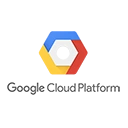Introduction
Google Cloud Monitoring is a powerful service that enables you to collect, store, and analyze metrics from various resources, providing real-time insights into the performance and health of your applications and infrastructure. With Monitoring, you can create custom dashboards, set up alerting policies, and gain visibility into your systems.
Key Concepts
Before we explore Google Cloud Monitoring, it's important to understand some key concepts:
- Metrics: Metrics are time-series data that represent the behavior or performance of resources. They provide insights into your systems' health and performance.
- Dashboards: Dashboards allow you to visualize and organize metrics and create custom views for monitoring and troubleshooting.
- Alerting Policies: Alerting policies define conditions that trigger alerts when certain thresholds or patterns are met. These are essential for proactive issue detection.
Using Google Cloud Monitoring
Let's explore how to use Google Cloud Monitoring effectively:
1. Define Custom Metrics
Create custom metrics that represent the behavior or performance of your resources. You can send custom metrics to Google Cloud Monitoring using the Cloud Monitoring API or a client library.
# Sample metric definition
metric {
type: 'custom.googleapis.com/my-metric'
labels {
my_label: 'value'
}
}
2. Create Dashboards
Create custom dashboards to visualize metrics and organize them according to your needs. Dashboards help you monitor key performance indicators (KPIs) and track the health of your systems.
# Example dashboard definition in JSON
{
"name": "My Custom Dashboard",
"displayName": "My Custom Dashboard",
"widgets": [
{
"xyChart": {
"dataSets": [
{
"timeSeriesQuery": {
"timeSeriesFilter": "metric.type=\"custom.googleapis.com/my-metric\"",
"unitOverride": "1"
}
}
]
}
}
]
}
3. Set Up Alerting
Define alerting policies to receive notifications when specific conditions or thresholds are met. Alerts can be delivered via various channels such as email, SMS, or integration with other tools like Slack.
# Sample alerting policy definition
conditions {
display_name: 'High CPU Usage'
display_metadata_filter: 'resource.type="gce_instance" AND metric.type="compute.googleapis.com/instance/cpu/utilization" AND metric.label.instance_name="my-instance"'
condition_threshold {
filter: 'metric.type="compute.googleapis.com/instance/cpu/utilization" AND metric.label.instance_name="my-instance"'
comparison_type: COMPARISON_TYPE_DOUBLE_GT
threshold_value: 0.8
}
notification_channels: 'projects/my-project/notificationChannels/my-channel'
}
Conclusion
Google Cloud Monitoring is a powerful tool for managing and monitoring the performance and health of your applications and infrastructure. With custom metrics, dashboards, and alerting policies, you can gain insights, detect issues proactively, and maintain the reliability and security of your systems.
For comprehensive documentation and advanced configurations, refer to the Google Cloud Monitoring documentation.

